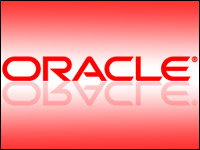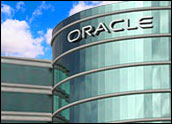
During a five hour event at its Redwood Shores corporate headquarters, Oracle executives, including CEO Larry Ellison and Co-Presidents Safra Catz and Charles Phillips, applauded the completion of Oracle’s purchase of Sun Microsystems and outlined their strategy for the new acquisition for a media and analyst audience.
Among the details:
- Although Oracle did not discuss its long-term retention plans for Sun’s 27,596 personnel, it did say it plans to hire some 2,000 new sales and engineering professionals while laying off “fewer than 2,000” existing workers during the next few months.
- Oracle’s strategy for Sun hardware will focus largely on UltraSPARC/Solaris servers, as well as Sun storage and networking products. Development of Intel/AMD x64 solutions will avoid the volume server market and focus on higher-end clustered systems.
- Oracle will continue to support existing Sun product lines, and future efforts will focus on integrated systems (like existing Oracle Exadata solutions) designed to optimize the performance of Oracle’s database software and other business applications.
- Oracle will bring in-house future sales for Sun’s top 4,000 customers, rather than allowing those sales and relationships to be managed by partners and resellers.
- Ellison expects Jonathan Schwartz, Sun’s current chief executive, to resign but hopes that Scott McNealy, Sun’s cofounder and chairman, will stay on at Oracle in a yet unspecified role.
Soap Opera Finale
So what does this all mean? For one thing, an end to one of IT’s longer running melodramas. Sun’s devolution from technology mover and shaker to asset grab bag qualifies as one of the industry’s strangest trips.
The company helped fuel and define the heady days of the dot-com boom but was never able to shake off the hard landing of the bust. While key competitors, including IBM and HP, got back into the game — or never left in the first place — Sun was reduced to cheerleading its relevance from the sidelines as increasing numbers of its customers headed for the exits.
Sun’s gift for self-promoted, sometimes self-inflicted drama even extended to its sale, with the company careening from one potential suitor to another (including HP and IBM) like a runaway bride. When Oracle surprisingly emerged as the as the lucky groom, many Sun traditionalists seemed to sigh in relief. Given their 20-plus-year history and numerous shared customers, surely Oracle “gets” Sun’s technologies and company culture in ways that IBM and HP could not. Right?
Reading Between the Lines
Maybe yes and maybe no. On the plus side, the pair’s long, close association should speed their integration and could help drive new and future product development, at least in the short term. Oracle might also be a better fit culturally for Sun, though it’s likely those particular concerns were mostly voiced by people whose understanding of competing vendors were shallowly based or deeply flawed.
In product- and customer-focus, at least, the Oracle/Sun pairing seems to have more potential than some other highly-trumpeted IT marriages.
However, it’s also likely that the happy couple is facing a more challenging “getting to know you” period and potentially tougher times than they may assume.
Why so? First and foremost, because of the fundamental differences between the businesses of software and hardware. Oracle is very good at the former but has demonstrated considerably less facility in the latter. The company will likely hire experienced people capable of effectively managing Sun, but will it offer the patience and investment needed to bring Sun’s UltraSPARC business fully up to speed? If not, imploring former Sun clients to “come back home” will likely fall on deaf ears.
In addition, Oracle’s enthusiasm for Sun must be considered in the context of client management. If Sun customers believe that UltraSPARC is on a short, potholed road to nowhere, then the result will be painful to Oracle’s bottom line — not to mention contradictory to Ellison’s claims that Sun assets will become almost immediately profitable. Migrating to IBM, HP and Dell systems, as hundreds of Sun clients already have, also exposes customers to alternative platforms and applications, which Oracle would obviously prefer to avoid.
While the dangers here seem clear enough, Oracle’s management of clients in past acquisitions (PeopleSoft offers a good example) has been anything but seamless.
Transformation Cuts Both Ways
Finally, while much of the talk around the deal has focused on how Oracle will transform Sun, it’s important to note that for the deal to fully succeed, Sun should also be transformative to Oracle. In part, Oracle pursued Sun because it recognizes the challenge that continuing tech vendor consolidation poses to IT specialists. Oracle built its reputation in the software industry with proactive, often unconventional product and market efforts.
However, the primary product strategy that Ellison has espoused — developing database/application-optimized systems — is already in full force at other vendors, particularly IBM. Oracle’s vision for Sun will be important to watch as the pair’s integration moves ahead. If it is as conventional as the launch event suggested, the future may not be as bright as Oracle or Sun customers might hope.
There are numerous other issues whose resolutions will become clearer over time. Oracle’s decision to bring Sun’s 4,000 biggest (and most profitable) clients in-house will almost assuredly irk Sun’s channel and other partners, a group Oracle would presumably like to keep in its corner.
It will be interesting to see what, if any, position Sun founder Scott McNealy takes at Oracle, particularly given the role he played managing Sun’s crucial public sector clients. That said, what will eventually define the success or failure of the deal is whether Oracle uses the Sun acquisition to evolve into an essentially new and more innovative organization. On that point, the jury is likely to remain out for months.
E-Commerce Times columnist Charles King is principal analyst for Pund-IT, an IT industry consultancy that emphasizes understanding technology and product evolution, and interpreting the effects these changes will have on business customers and the greater IT marketplace.























































Social Media
See all Social Media